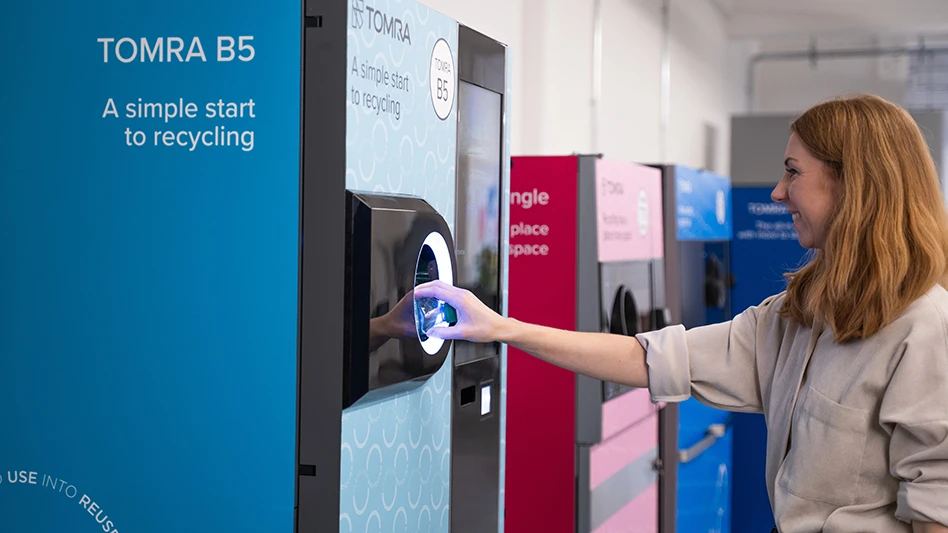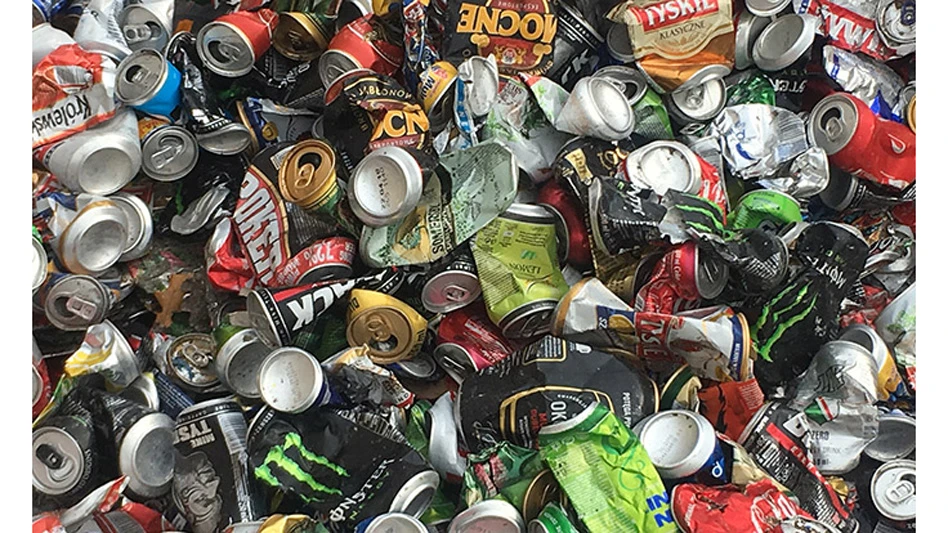
Photo by DeAnne Toto
U.S. Commerce Secretary Howard Lutnick started an investigation into the possible national security threat imports of copper pose and the potential need for trade remedies earlier this year.
President Donald Trump ordered the investigation into copper imports under Section 232 of the Trade Expansion Act of 1962, the law he used in his first term to impose 25 percent tariffs on steel and aluminum that continue today. Those advocating for Section 232 protections for copper, including Adam Estelle, president and CEO of the Copper Development Association (CDA), McLean, Virginia, cite its importance to the electrical grid and the growth of data centers and artificial intelligence (AI).
Copper demand is growing
Speaking during the Copper Spotlight during the Recycled Materials Association (ReMA) 2025 Conference & Exposition, Estelle noted the strategic role copper played in the U.S. during World War II. He said the red metal was taking center stage again as the U.S. transitions to a mineral-based economy, with the metal needed for data centers and AI, as well as for electric vehicles.
The U.S. has a commanding lead in building data centers relative to other nations, Estelle said, adding that 250,000 to 500,000 metric tons of copper would be needed for the 20 such facilities planned for the U.S.
Copper also is critical to electrification. “Copper has a critical role in energy storage and transmission,” he said. “It is inextricably linked to energy security and national security.
“A strong power grid cannot exist without a strong copper industry,” Estelle continued, noting the urgent need to add more capacity to the U.S. electrical grid to improve its resiliency.
Copper also is the second-most-used material by the Department of Defense, he said, illustrating its national security importance.
Estelle said copper demand was projected to double by 2035. While this would create a significant challenge, he said he was confident enough copper is available to meet projected demand. However, a comprehensive strategy would be needed. “The U.S. will need to mine more, refine more [and] recycle more,” he said. “It’s not a competition between primary and secondary—every unit matters.”
While the U.S. has 275 million metric tons of geological copper supply, much of it is on government land with complicated permitting requirements, Estelle said, adding that it takes 29 years from point of discovery to production.
In addition to the limited primary copper production in the U.S., the country exports a little more than half of the copper scrap it generates, he said. While recovered copper exports have declined by about 10 percent in the last decade as China has restricted the types of copper scrap it will accept, Estelle continued, exports of unalloyed grades, such as bare bright, No. 1 and No. 2 copper, have increased by nearly 60 percent.
He said these grades are strategically important to the domestic copper industry as the two operational primary copper smelters in the U.S. also could use this material.
Of tariffs and export bans
Regarding the 232 investigation into copper, he said 90 comments were submitted from a wide spectrum of organizations, which included the CDA and ReMA.
In the CDA’s comments, Estelle called for tariffs on imports of all semifabricated copper and copper alloy products (i.e., rods, bars, plates, sheets, strip, wire, tubes, etc.) and all relevant downstream derivative articles (i.e., parts, components, product assemblies, etc.) to drive long-term U.S. investment and reshore the domestic demand base for American-made, value-added copper and copper alloy products; a targeted U.S. export ban for all countries on domestically recyclable high-purity copper scrap; and an exemption from tariffs on raw material feedstocks, including refined copper cathodes and copper scrap.
He told Copper Spotlight session attendees, “Where we sit at CDA, targeted export controls on high-purity grades of scrap are prudent and a strategic priority for this country. If we continue down this path, there won’t be an industry to consume this scrap.”
Estelle added that it made no sense to ship massive amounts of copper scrap to the other side of the world and back again, noting the need to shorten supply chains and cut down on Scope 3 emissions.
While he acknowledged the CDA’s comments did not represent the majority view, Estelle said the organization was not the only one asking for restrictions on scrap exports from the U.S.
ReMA, however, noted in its comments, “A hallmark of American economic strength is the presence of American industries in export markets. This is one of the many areas in which the recycled materials industry contributes to America’s global economic competitiveness. ReMA members’ exports are consistently and competitively strong.”
The association added, “ReMA recyclers’ ability to produce for domestic needs and export surplus materials to the global market is the model that every industry should strive for. Exports not only significantly help the U.S. balance of trade but also extend America’s reach, power and influence abroad. In fact, recycled materials are among the nation’s largest commodity exports by volume, comparable to agricultural and energy products like grain and corn, cotton, timber and petroleum.”
Untapped potential
Following Estelle’s presentation, session moderator Edward Meir of London-headquartered Marexled a question-and-answer period that included Estelle and Inge Hofkens, chief operating officer, Multimetal Recycling, at Aurubis AG, which is ramping up production at its secondary copper smelting facility in Augusta, Georgia.
Meir asked Hofkens if Aurubis envisioned difficulty in getting the scrap it needs for its Augusta smelter if the U.S. did not enact an export ban.
“Material and markets always find themselves,” she said, adding that Aurubis would need to excel at what it does to make it a preferred buyer.
Hofkens said Aurubis located a secondary smelter in the U.S. because the scrap material is here. “The market is absolutely there,” she said.
While recycling is critical, Hofkens said it would not be sufficient in meeting copper demand, though untapped potential remains in recycling.
“If you know of an untapped market for copper, come see us at Aurubis,” she urged.
This article was updated June 3 to fix a typo that originally stated that exports of unalloyed grades, such as bare bright, No. 1 and No. 2 copper, have increased by nearly 6 percent rather than the correct 60 percent.
Latest from Recycling Today
- ReMA urges open intra-North American scrap trade
- Axium awarded by regional organization
- China to introduce steel export quotas
- Thyssenkrupp idles capacity in Europe
- Phoenix Technologies closes Ohio rPET facility
- EPA selects 2 governments in Pennsylvania to receive recycling, waste grants
- NWRA Florida Chapter announces 2025 Legislative Champion Awards
- Goldman Sachs Research: Copper prices to decline in 2026





